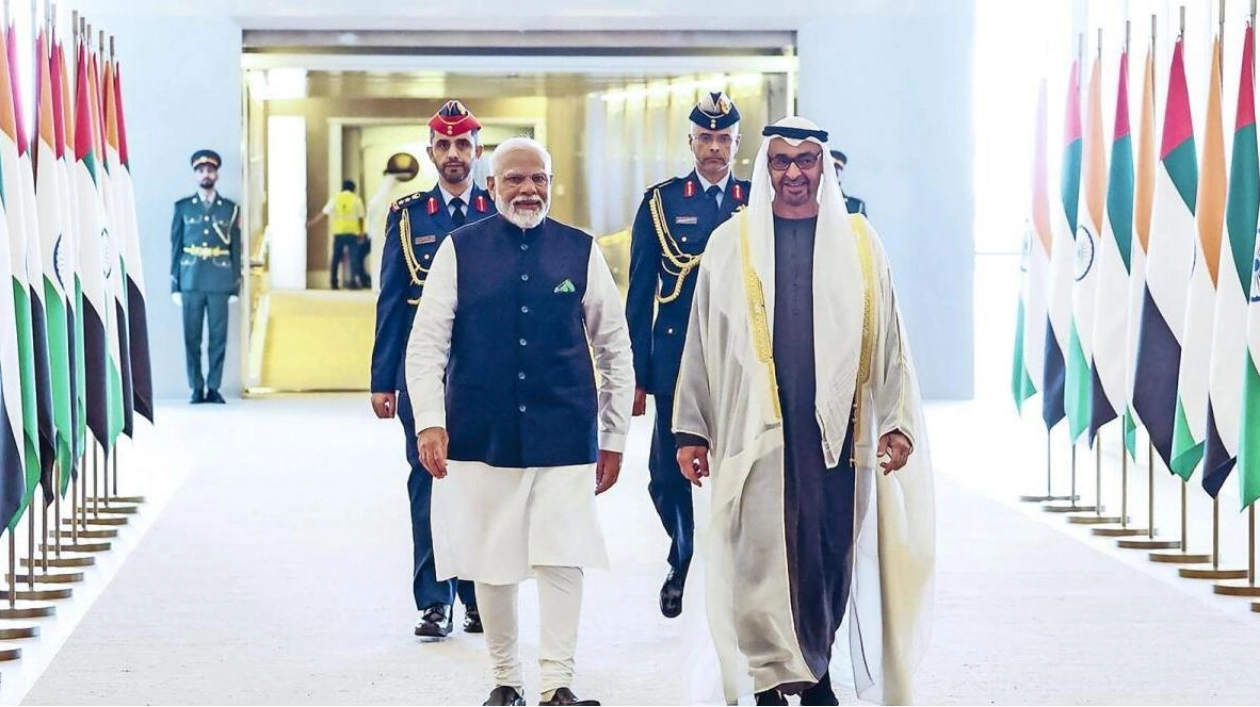India, the world's fastest-growing major economy, is celebrating its 78th Independence Day with a renewed commitment to transform into 'Viksit Bharat' or a Developed India by 2047, marking the 100th anniversary of its independence. This year is particularly significant as India's GDP has crossed the $4 trillion threshold, moving it closer to the $5 trillion goal by 2027 and positioning it as the third-largest economy, surpassing both Japan and Germany.
As the world's most populous nation, India is embarking on the next phase of its remarkable growth journey, fueled by policy reforms, technological advancements, and a youthful, dynamic workforce. Over the past decades, India has established itself as one of the most dynamic and resilient economies globally. Its sustained growth, vibrant entrepreneurial ecosystem, and vast domestic market have propelled it to become the fifth-largest economy, surpassing the United Kingdom in 2022.
India's GDP grew by 8.7 percent in the financial year 2021-22, making it one of the fastest-growing major economies worldwide. The World Bank projects India's GDP growth to reach 6.9 percent in the current financial year (2023-24) and 6.6 percent in 2024-25. Various international agencies like the Asian Development Bank (ADB) and Fitch Ratings estimate India's growth at 7 percent, while the International Monetary Fund (IMF), S&P Global Ratings, and Morgan Stanley predict a 6.8 percent growth rate for the financial year 2024-25.
The Reserve Bank of India (RBI) is optimistic about India's economic trajectory, projecting a GDP growth rate of 7.2 percent for the current fiscal year. The central bank's analysis suggests that India's economy is well-positioned to maintain robust growth momentum, driven by domestic demand and policy support. A report by the Centre for Economics and Business Research (CEBR) predicts that India will overtake the United States to become the second-largest economy by 2027.
Sanjeev Sanyal, a member of the Economic Advisory Council to the Prime Minister of India, forecast that India would reach the $4 trillion GDP milestone this year, outpacing global growth rates. 'This year, India's GDP will reach $4 trillion, putting us on par with Japan in terms of economic size. We continue to lead as the world's fastest-growing economy by a significant margin,' Sanyal stated.
After liberalisation, it took India 16-17 years to cross the first trillion dollars mark. It took another seven years to reach the $2 trillion mark, which happened in 2014-15. It took another 7 years to hit the $3 trillion mark in 2021-22. Despite the challenges posed by Covid-19, India is projected to cross the $4 trillion mark in just three years and reach $5 trillion in two years, barring any major unforeseen shocks.
Other macroeconomic indicators are also showing positive trends. Inflation is decreasing, and while the fiscal deficit remains high, tax revenues are robust, and the external current account is manageable due to net capital inflows. The RBI’s foreign exchange reserves have reached record levels, and the rupee has been stable against the US dollar, indicating growth with stability.
The IMF’s projections for 2024 place India’s GDP at $3.94 trillion, close to Japan’s $4.11 trillion and significantly behind Germany’s $4.59 trillion. Given its faster growth, it is expected that India’s GDP will surpass both Japan and Germany in the coming years, making it the world’s third-largest economy.
The August update of Deloitte’s India Economic Outlook highlighted several initiatives in the Union Budget 2024-25 aimed at improving agriculture productivity, creating jobs for the youth, and boosting manufacturing, which will help improve supply-side demand, curb inflation, and increase consumer spending, especially in rural areas.
Despite robust growth, some challenges remain. The World Bank's latest Development Report suggests that at current rates, it would take India around 75 years to reach one-quarter of the US's per capita income. Some economists, including former RBI Governor Raghuram Rajan, argue that India may need to reconsider its economic strategies to achieve higher growth and development.
To achieve its goal of becoming the third-largest global economy by 2027, the government has implemented a multifaceted strategy, including accelerating economic growth, bolstering the manufacturing sector, promoting digital transformation, developing human capital, and driving sustainable development. India is also expanding its geopolitical and geoeconomic influence through active engagement in regional and global forums.
As India celebrates its 78th Independence Day, the country stands at a pivotal moment in its history, poised to transform into a developed India by 2047. Its remarkable economic growth, thriving entrepreneurial ecosystem, digital transformation, and strategic initiatives have positioned it as a global economic powerhouse. With the targeted goal of becoming the third-largest economy by 2027, India is charting a course towards a future of prosperity, technological innovation, and sustainable development.






